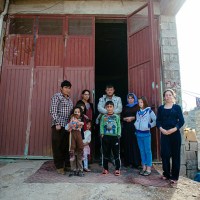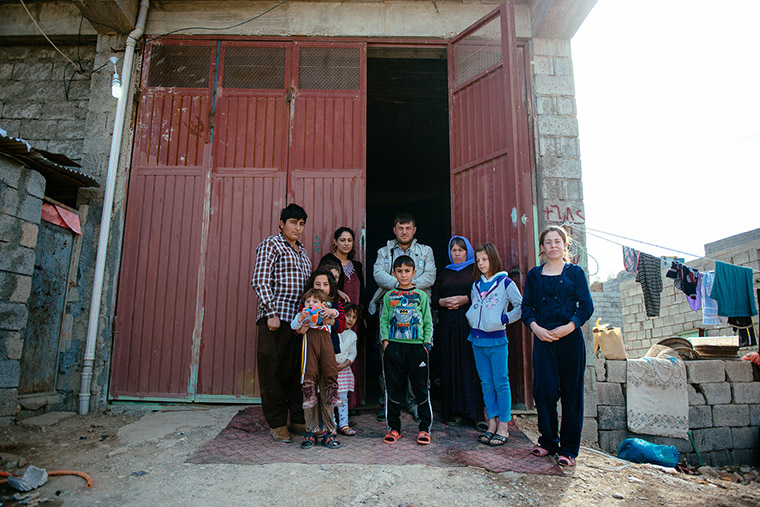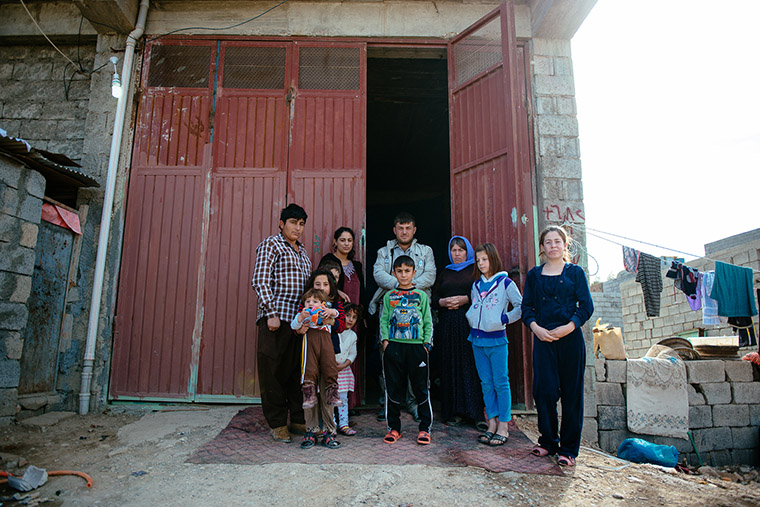
There were stories going around—stories of IDPs living in rough conditions in a village on the outskirts of town.
Our partners slowly drove back and forth along the same stretch of rutted, dirt road. They paused to ask local construction workers “Where do the refugee families live?” The workers pointed at spots further up the road and said “You’ll see them.” No matter how many times our partners drove that stretch of road, they couldn’t find the families they were looking for.
Help finally came in the form of a young boy.
“Do you know where the refugees live?”
“That’s me! We live over there.” He pointed to a couple doors down and there was the tell-tale sign of every home: plastic sandals lined up outside the door.
Our partners couldn’t find the families they were looking for, because they weren’t looking in the right place—they weren’t looking in unfinished concrete warehouses.
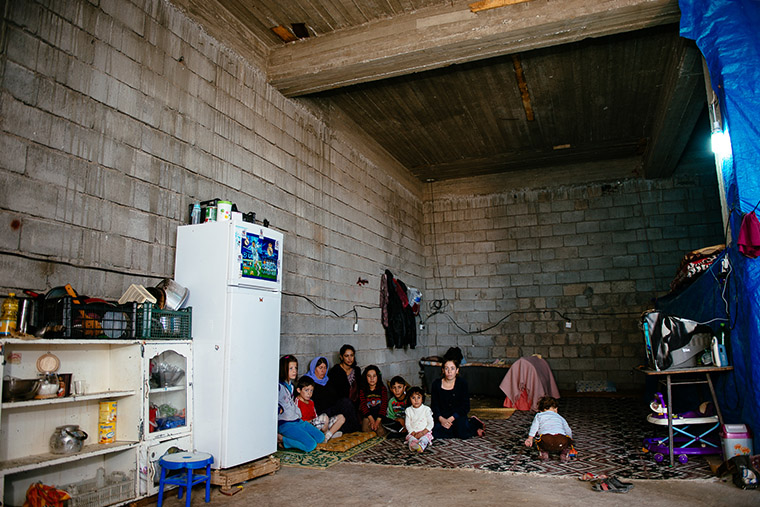
Halo and her family (pictured) were immediately welcoming. They were patient with questions, and completely open with answers. The young boy, already fluent in the local dialect and mature beyond his 11 years, acted as translator and guide. Part of their story slowly emerged.
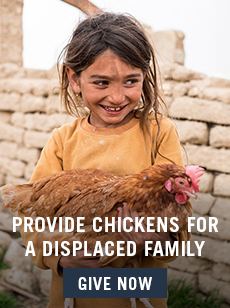
Halo and her family are Yazidis, a minority group here in Iraq. They had escaped from Mount Shinjar a couple months prior, and somehow arrived at this unlikely village—a very bumpy drive off the main road, and far from home.
Like most refugees and internally displaced people (IDP), they’d arrived after days of difficult travel with nothing but the clothes they were wearing when they’d fled. Halo was grateful to find a place to rent; humble as it was, she was thankful for walls and a roof. But the cost of rent was crippling. The economy was in crisis, and the influx of IDPs made housing difficult to find—the cost of even unfinished buildings was steep. All of the boys over 10-years-old worked to cover the cost. They earned just enough to cover the rent, but not much more.
We asked about the few things in their home…the refrigerator and sleeping mats, the dishes and old scraps of rugs. “They don’t belong to us. They belong to the construction workers building this place. They let us use them.”
Our partners ask each IDP family what they need most. The question was posed to Halo too. Her answer came quickly: carpet…and heaters.
Heaters are an obvious answer with winter’s rapid advance. But carpet?
Carpet is much more than a floor covering here. Traditional families don’t use furniture—life is lived on the floor. Sitting, eating, sleeping—everything happens on the floor. In the cold of winter, carpet provides a vital barrier against cold concrete floors. And culturally, a space isn’t a home without floors lined with carpets in the winter.
Carpet protects from the cold. Carpet makes an unfinished warehouse feel like home. Carpet brings dignity. You can help us make warm homes in unlikely places by donating toward our crisis relief! Click below to give.
Photo credit: Heber Vega

